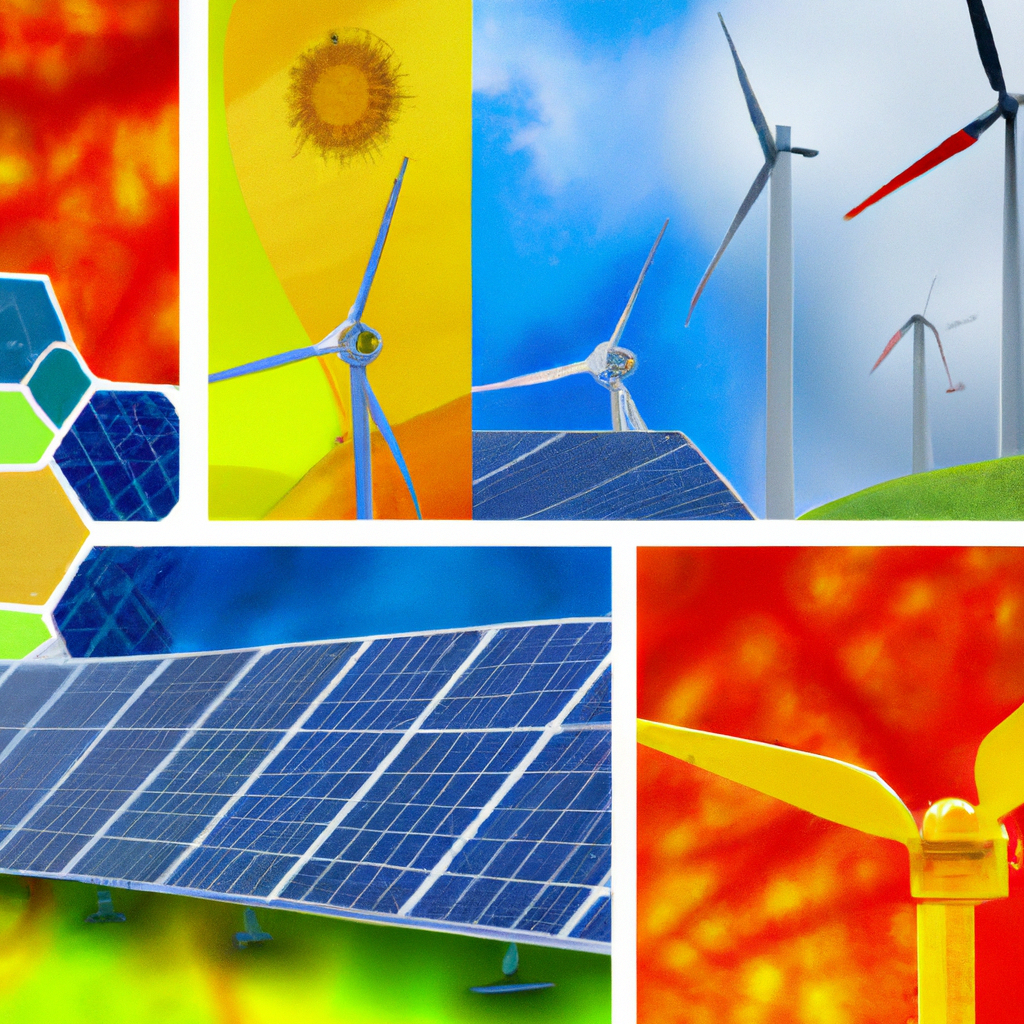The Top Most Innovative Renewable Energy Technologies You Haven’t Heard Of
As the world progresses towards a greener and more sustainable future, renewable energy technologies continue to evolve and innovate. There are many exciting developments in the field of renewable energy that are worth exploring. In this article, we will take a closer look at some of the top most innovative renewable energy technologies that you probably haven’t heard of.

Solar Paint
Solar Paint is a revolutionary new technology that has the potential to change the way we think about solar energy. This innovative technology allows for the creation of solar panels that can be applied to virtually any surface. The paint is made up of tiny particles that are capable of absorbing sunlight and converting it into electricity. The paint can be applied to walls, roofs, and even windows, making it an incredibly versatile technology.
One of the biggest advantages of solar paint is that it can be applied in layers. This means that the more layers of paint that are applied, the more electricity can be generated. Additionally, solar paint is much cheaper and easier to install than traditional solar panels. This makes it an ideal solution for homeowners and businesses that want to switch to renewable energy without breaking the bank.
Ocean Energy
Ocean energy is a renewable energy technology that harnesses the power of the ocean to generate electricity. This innovative technology has the potential to provide a significant amount of clean energy to coastal communities around the world.
There are two main types of ocean energy: wave energy and tidal energy. Wave energy is generated by the movement of ocean waves, while tidal energy is generated by the rise and fall of the tides. Both of these technologies have the potential to provide clean and reliable energy.
One of the biggest advantages of ocean energy is that it is predictable. Unlike wind and solar energy, which are dependent on weather conditions, ocean energy is consistent and reliable. Additionally, ocean energy has a much smaller environmental footprint than traditional forms of energy, such as fossil fuels.
Geothermal Energy
Geothermal energy is a renewable energy technology that harnesses the heat of the earth’s core to generate electricity. This technology has been around for decades, but recent innovations have made it more efficient and cost-effective.
Geothermal energy works by tapping into the heat of the earth’s core and using it to generate steam. The steam is then used to power turbines, which generate electricity. This technology can be used in areas where there are natural geothermal resources, such as geysers and hot springs.
One of the biggest advantages of geothermal energy is that it is a constant source of energy. Unlike wind and solar energy, which are dependent on weather conditions, geothermal energy can be harnessed 24/7. Additionally, geothermal energy has a much smaller environmental footprint than traditional forms of energy, such as fossil fuels.
Biomass Energy
Biomass energy is a renewable energy technology that uses organic materials to generate electricity. This technology has the potential to provide a significant amount of clean energy while reducing waste.
Biomass energy can be generated from a variety of sources, including wood chips, agricultural waste, and even municipal solid waste. The organic materials are burned to generate steam, which is then used to power turbines that generate electricity.
One of the biggest advantages of biomass energy is that it is a renewable source of energy that can be generated from waste materials. Additionally, biomass energy has a much smaller environmental footprint than traditional forms of energy, such as fossil fuels.
Hydrogen Fuel Cells
Hydrogen fuel cells are a renewable energy technology that uses hydrogen to generate electricity. This technology has the potential to provide a significant amount of clean energy while reducing greenhouse gas emissions.
Hydrogen fuel cells work by combining hydrogen and oxygen to produce electricity, with water as the only byproduct. This technology can be used to power a variety of applications, including vehicles and buildings.
One of the biggest advantages of hydrogen fuel cells is that they are incredibly efficient. Additionally, hydrogen fuel cells have a much smaller environmental footprint than traditional forms of energy, such as fossil fuels.
Conclusion
Renewable energy technologies continue to evolve and innovate, providing us with exciting new ways to generate clean energy. From solar paint to hydrogen fuel cells, there are many innovative technologies that are worth exploring. As we continue to move towards a greener and more sustainable future, these technologies will play an increasingly important role in our lives.







